CANBERRA, ACT — When Jeremy Loiterton was 16, he sent his mum an email no parent wants to receive. It said, simply, “Help.”
At the beginning of that year, Jeremy had come out as transgender. Being able to live openly and shed a secret he had kept since his early teens was liberating. “Four months into being out as Jeremy, I knew it was right,” he tells BuzzFeed News. “I had never felt more happy in my entire life.”
But despite his elation at being out, Jeremy was still stuck in a body he hated. He started to feel deeply disconnected from the friends and teachers around him, and struggled with depression.
He started failing school. His anxiety was so bad, he could only talk to his mum about being transgender via email. “Help,” he wrote to her. “I can’t be at school anymore.” Jeremy dropped out at the end of the year, trying to finish via distance education but eventually giving up altogether.
"Help. I can't be at school anymore."
He needed medical treatment, badly. But to start taking cross-sex hormones – in this case testosterone – as a minor, he had to apply to the Family Court. It wasn’t an option for Jeremy. His father was absent, and he needed consent from both his parents. He just had to wait.
“From age 12 to 18, six years, I went without medication for a medical malady,” he says. “It was absolutely awful.”
Access to medical treatment changes transgender people’s lives. It can mean the difference between employment and homelessness, education and dropping out, wellbeing and depression, anxiety and suicide. But for many, it remains out of reach.
Australia is the only Western country where transgender people under the age of 18 must seek court permission to start taking cross-sex hormones. At best, experts say, the delay causes emotional trauma and financial stress. At worst, it’s a matter of life and death.
Now 18, Jeremy is sitting with BuzzFeed News outside a Canberra café, under an umbrella that is blocking out the sun but not the heat. He’s dressed handsomely in a purple button-up and black pants, with a wave of blonde hair swept across the top of his head and striking symmetrical lip piercings.
Jeremy is looking for work after dropping out of school last year. Ideally, he says, he’d like to score a gig as an apprentice baker. “I do cake decorating,” he adds with a smile.
He’s been on testosterone for 11 months and is doing well. But recalling the years prior, he says the only thing that kept him alive was the constant reassurance of Michelle Telfer, a paediatrician in the Gender Service at the Royal Children’s Hospital in Melbourne.
“If it wasn’t for her being so reassuring at every step, telling me there is a light at the end of the tunnel – there would be no Jeremy,” he says matter-of-factly. “She has saved the lives of countless children.”
“I don’t know if anyone has ever told her that.”
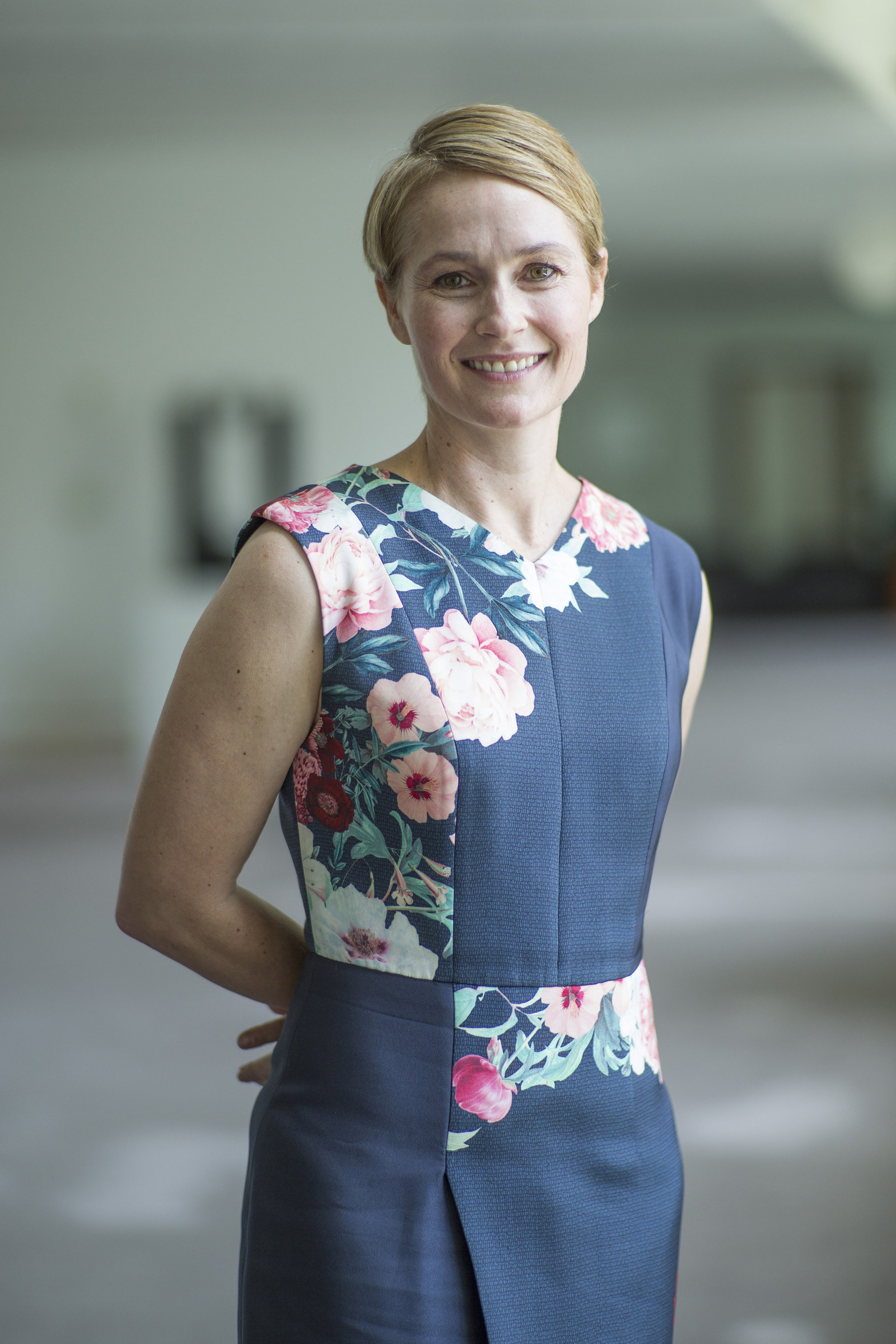
The unassuming Telfer is at the centre of so many transgender children’s stories, but reacts with surprise – “You want a picture of me?” – when BuzzFeed News asks her to pose.
Telfer is Australia’s most experienced paediatrician when it comes to transgender adolescents. She heads up a staff of 16 at the Melbourne Royal Children’s Hospital Gender Service, and has been responsible for developing the program – the largest in Australia – over the past four years.
In operation since 2003, the state-funded service diagnoses and educates transgender children and their families. Much of its work involves guiding transgender adolescents through the nightmare that is puberty.
“It is the most incredibly distressing period of their life,” Telfer says, “because many of the changes of puberty are irreversible – once you develop breasts, you can’t get rid of them unless you have surgery to remove them. Once your voice breaks, you can’t do anything to alter the deepening of your voice.”
In other words, the stakes are high. Puberty, high school; it’s like walking a tightrope for trans kids. It’s in this crucial period that some children begin to self-harm, or worse, attempt suicide.
“Many young people say if I can’t live as who I am, I’d rather be dead,” Telfer says. “We hear that frequently.”
It’s no wonder Jo Hirst is worried.
Hirst, the mother of a transgender son she has asked not to be named, is a central figure in the small, strong community of parents supporting their transgender kids. Her warmth and generosity is immediately evident, but underpinning it is a quiet ferociousness. Hirst is furious about the challenges facing her 7-year-old.
“Someone is going to die soon if something doesn’t change,” she tells BuzzFeed News. A 2010 study from LaTrobe University found that 50% of transgender adolescents will self-harm, while 28% will attempt suicide.
"Someone is going to die soon if something doesn't change."
In a private Facebook group for parents of gender-diverse children, these statistics are brought to life on a regular basis.
“There are posts all the time when parents whose children can’t access hormones easily become suicidal and end up in mental health units,” Hirst says. “It is so distressing and so terrifying to see one of those posts. They’re not rare.”
Hirst thinks the world of Jeremy, who acts as a role model to her young son. However, she fears for children who are going through what he did.
“Not all of them can hang on, like Jeremy, until they are 18. He has amazing strength, and an amazing mum. Not all of them can do that.”
As acceptance and understanding of transgender people continues to grow, they are coming out younger and younger.
The Gender Service at the Royal Children’s Hospital in Melbourne started with one referral in 2003. Last year, it received 170, up from 104 in 2014, 60 in 2013, and 18 in 2012.
Upon presenting at the Gender Service, children are assessed by a specialist team including clinical psychologists, child adolescent psychiatrists, paediatricians, and fertility experts. The process is “very thorough”, says Telfer, in response to public concern that growing acceptance of transgender people will see kids transitioning willy-nilly.
This arduous diagnostic phase varies depending on the age of the child. The clinic sees children aged from 3 to 18. The younger they are, the less urgent the diagnosis. “If we saw a 3-year-old, for instance, there would be no need to give a diagnosis for many years,” Telfer says. “We would wait, watch, support, educate.” For kids about to start or who have just started puberty, the process doesn’t skip any steps. But they are often moved up the year-long waiting list so they can get the treatment they need as soon as possible.
For prepubescent children, treatment can be as simple as gender affirmation. A young trans girl might grow out her hair, wear dresses and skirts, adopt a new girl’s name.
Once puberty hits, treatment can be divided into two stages. The first: puberty blockers. This medication, which can be prescribed by a doctor, suspends the development of secondary sex characteristics while allowing for cognitive and social growth. Blockers are reversible – if a child stops taking them, their body will go straight back to getting on with puberty.
The second is cross-sex hormones. This is the part that can only take place after court approval, and typically involves a transgender boy – like Jeremy – starting to take testosterone, or a transgender girl starting to take oestrogen, around the age of 15 or 16.
European studies show exceptional outcomes for young transgender adults who accessed these stages of treatment as kids, says Telfer.
“We see improved mental health outcomes, we see quality of life that’s the same as the general population, we see rates of higher education completion above average levels, and we see the same vocational outcomes as the general population,” she says.

“Do you see my brothers and sisters going to court so they can go through puberty? No. So why do I have to?”
Talk of developing breasts is enough to make the average kid blush, but 10-year-old Evie is just mad that she has to go to court for the privilege.
“A lot of kids in my class are going through puberty,” she tells BuzzFeed News, in between slurps of a big strawberry milkshake. “It’s basically two girls, me and a friend, we’re the only ones with a flat chest. The rest are all having everything happen.”
As the middle child of five, Evie is well-trained in a bargaining tactic any parent of multiple children will recognise. “Do you see my brothers and sisters going to court so they can go through puberty?” she asks. “No. So why do I have to?”
But like a lot of questions kids ask, the answer is complicated.
Fiona Kelly is an associate professor of law at LaTrobe University. She’s written extensively on the legal quagmire transgender kids and their families face when they embark on the Family Court process. And she’s often tasked with explaining the precedent in simple terms.
In brief, in 2004 a 13-year-old named Alex wanted to access puberty blockers. As Alex was a ward of the state, the Department of Human Services worried they did not have the power to consent to treatment on his behalf. So they sought permission from the Family Court.
Faced with making a decision, Justice Nicholson looked for precedent and homed in on a 1992 decision from the High Court known now as Marion’s Case. It was about an intellectually disabled girl whose parents had sought permission from the court to have a hysterectomy performed on their daughter, which would effectively sterilise her.
In deciding the case, the court stated that parental or guardian consent could not be given for procedures that are invasive and irreversible and are not in direct response to a physical, rather than psychiatric, medical issue. A court had to weigh in. In using this as a guide for Alex’s case, the Family Court in Australia created a precedent for special medical treatment that put gender dysphoria treatment in the same category as sterilisation.
“There’s some distinct differences between the two cases,” says Fiona Kelly. “The issue is whether there is any risk of the child and the parent having conflicting interests.
“In gender dysphoria, I can’t see what the risk would be, in giving the parent the opportunity to consent. I can’t imagine a situation where a parent is imposing this on a child.”
A significant break came in 2013 when an appeal decision removed permission for kids to use blockers from the Family Court’s jurisdiction. However, the restriction on cross-sex hormones endures. And that is why Evie has to ask the court for permission to go through puberty as a young woman.
At the juncture of this medical and legal imbroglio is a simple fact: Kids are forced into a chronically clogged court system.
They are caught between a bad option and a worse one: a costly and anxiety-inducing legal process, or living with a body that doesn’t match their identity.
In her research, Kelly has found the average time between filing an application and a decision being handed down to be 8–12 months – a delay that takes an “enormous emotional toll”.
“The current court process is a very harmful, lengthy, and expensive rubber stamp.”
“It came through strongly in the interviews that the child’s mental health deteriorated rapidly as the process went on,” she says. “A lot of them are fearful – the idea of court being this adversarial scary formal process is really overwhelming.”
Kelly also points out that since these hearings started in 2004, not a single child has been denied cross-sex hormone treatment.
“The current court process is a very harmful, lengthy, and expensive rubber stamp,” she says.
Increasingly, the Family Court agrees.
Last year, Justice Victoria Bennett argued treatment for gender dysphoria should never have been made a special medical treatment in the first place. Justice Steven Strickland believes a High Court appeal to overturn the precedent is unlikely given the trend towards these applications being granted, and so has opined that advocates should focus on lobbying Canberra for a small change to the Family Law Act to end the court’s involvement in cross-sex hormone therapy.
So on 22 February, a group of transgender children and their parents travelled to Canberra to meet with MPs. Their goal: get support for that small legislative change.
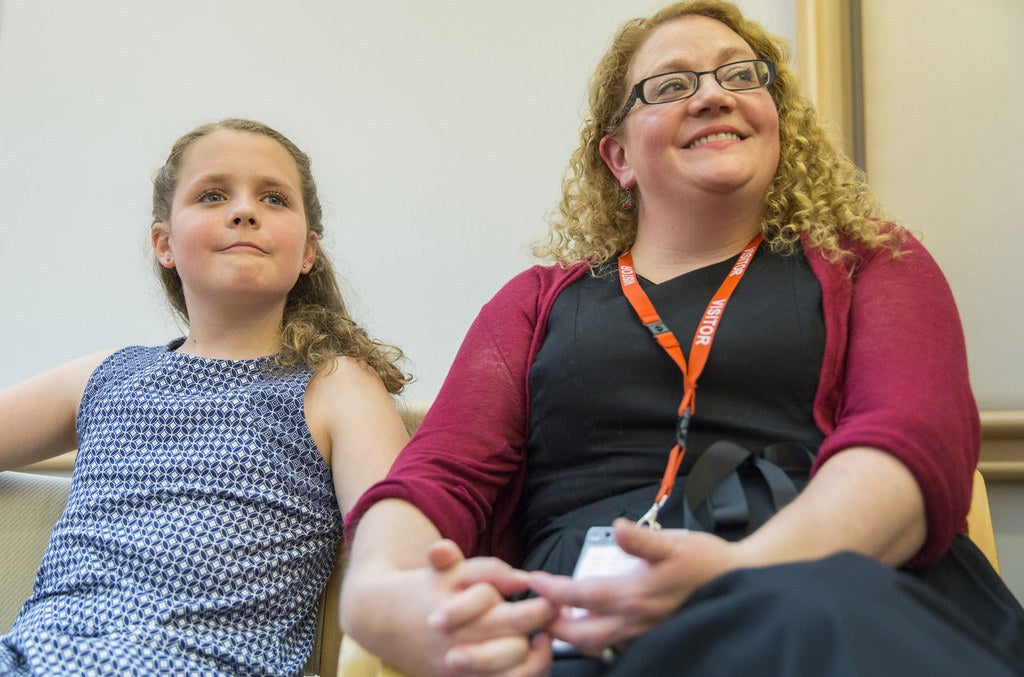

At an event hosted by Greens senator Janet Rice, about 15 transgender children, with their siblings and parents, filled a Parliament House meeting room. They were joined by various federal MPs, including Liberal Warren Entsch, Labor’s Graham Perrett, and independents Andrew Wilkie and Cathy McGowan.
Evie and Meagan occupied a seat at the table in the middle of room, tiny Evie sitting on her mother’s lap in a dress and silver ballet flats. Jeremy sat against the wall flanked by a generous spread of cakes, tea, and juice. Other kids donned rainbow T-shirts. One brought a sign, painted in the colours of the transgender flag, that read, “My people need our rights.” As the room heard anecdotes peppered with anguish and frustration from a panel of children, parents, and experts, some people fought back tears.
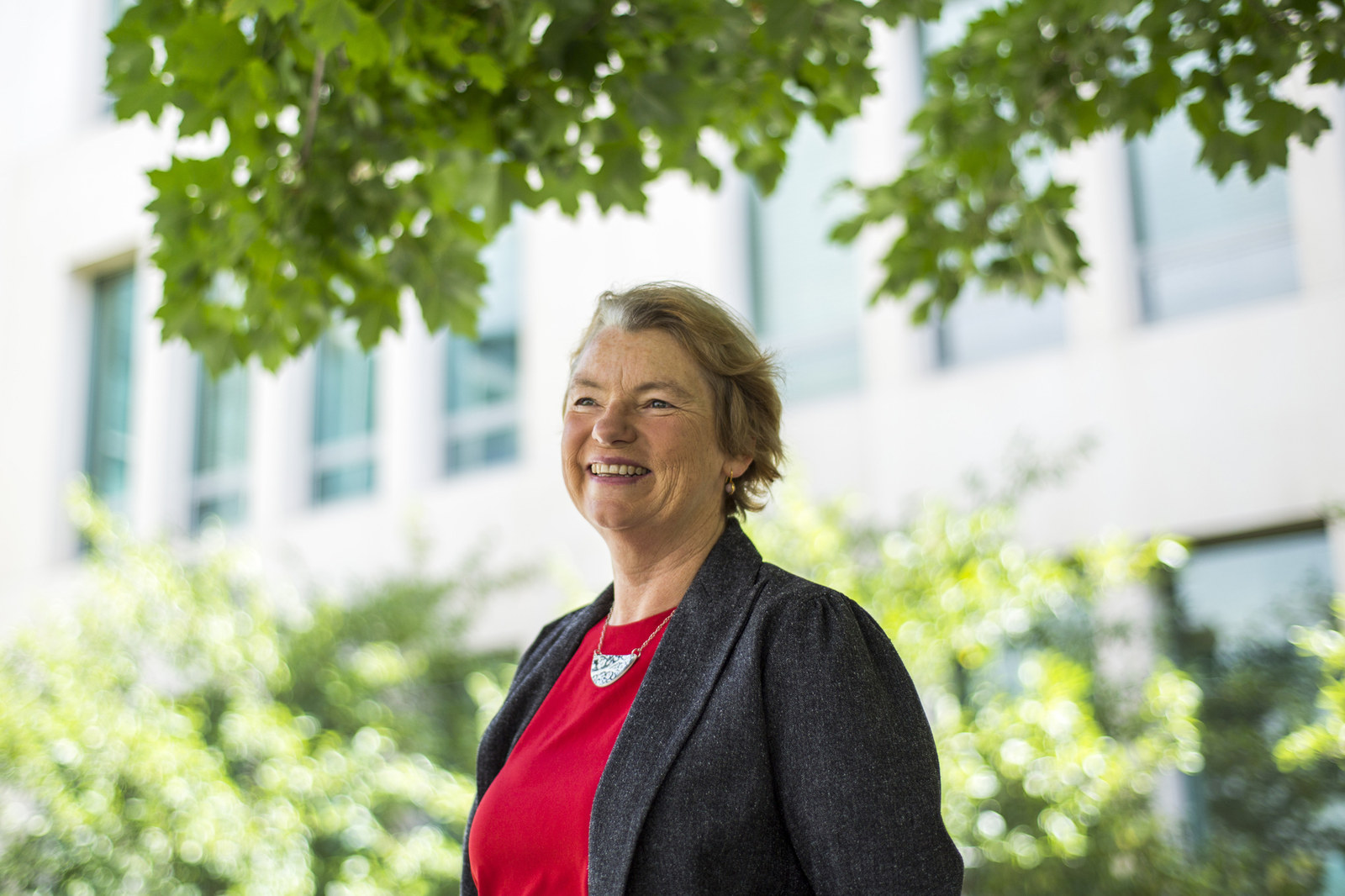
Greens senator Janet Rice says she was “very pleased” with the level of support shown for these kids.
The proposed reform has cross-party support within the Parliamentary Friends of LGBTI Australians group, co-chaired by Rice, Entsch, and Perrett.
“The legislative change isn’t vastly complicated,” Rice says. “If we have [wider] cross-party support, it should be able to get through the parliament smoothly.”
She says: “I am hopeful that within the year it should be possible,” but then adds: “Maybe I’m being overly optimistic.”
Right now, the potential for reform lies in the hands of attorney general George Brandis. A statement provided by his office to BuzzFeed News said: “The Government is sensitive to the concerns of children and their families who are living with gender dysphoria and is actively considering options for reform.”
There is no indication of a timeline. Rice says she will “keep checking in”.
It’s hard to parent a transgender kid; to watch them wrangle with issues that adults find thorny and complex. And even the most supportive of parents remember a time when they weren’t fully on their child’s side.
Evie recalls “walking like a girl” before she had come out: “Before I transitioned, I just walked casually and Mum would go, ‘Walk like a boy!’”
Her mum, Meagan Macdonald, winces. “My husband and I, we just weren’t there,” she offers apologetically. Like a lot of parents, the Macdonalds had no experience with what it meant to be transgender.
“It came down to Evie screaming at me, saying, ‘Why can’t you just accept me for who I am?’” Macdonald says. “I walked away going, ‘Why the hell can’t I? It’s me who has to change.'”
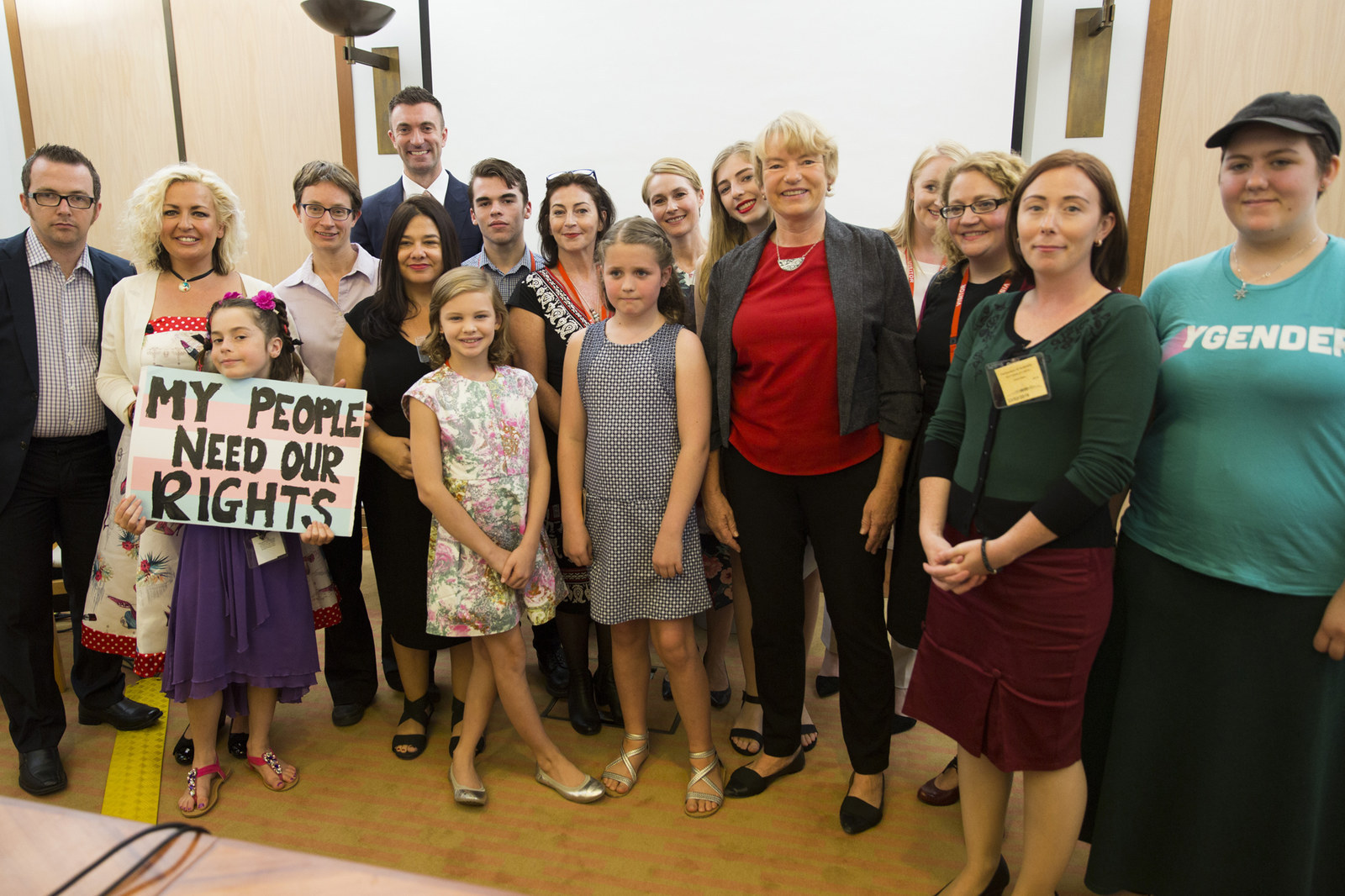
Evie’s family is prepared to go through the court process if that’s what it comes to – but they would prefer to avoid it.
The emotional toll aside, there are practical concerns: the average cost of the process ranges from $10,000 to $30,000 (AUD). With five kids to feed, clothe, and put through school, the Macdonalds don’t have that kind of money just lying around.
“We would have to remortgage our home to do the court process, which we will do if we have to,” Macdonald tells BuzzFeed News. “But at the end of the day, there’s so many families who aren’t even in that position. You’ve got single parents, renters. Where do they get the money?”
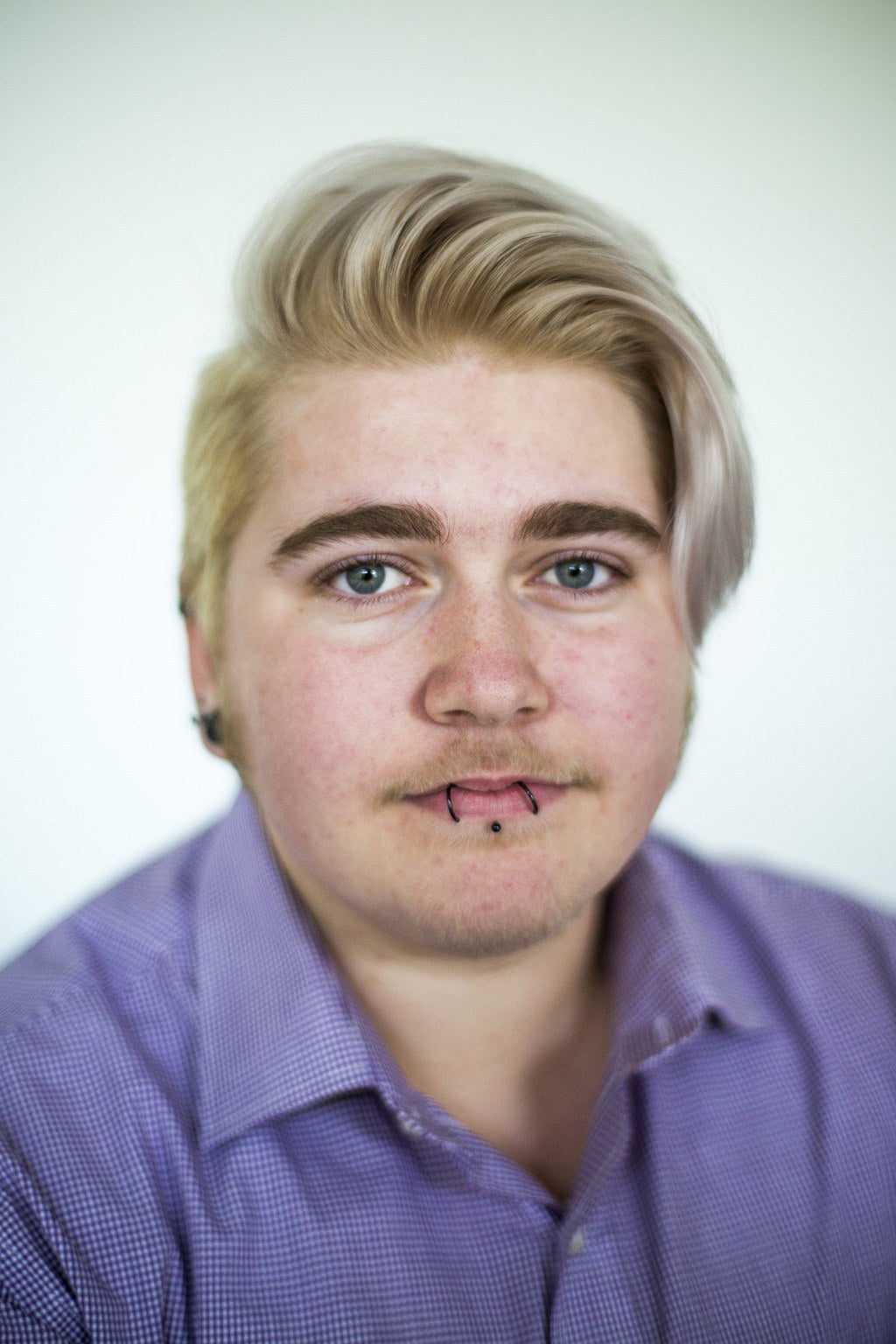

Evie is part of a new generation of transgender kids who have a real chance of never having to go through the pain Jeremy experienced in the years he waited for much-needed medical treatment. But it's a chance that will be inaccessible to many, unless the court process is abolished.
Jeremy easily ticks off the ways his life would have been different if only he got the treatment he needed earlier.
“There’d be no severe depression, no anxiety about trying to leave the house and be seen as male."
“There’d be no severe depression, no anxiety about trying to leave the house and be seen as male,” he says. “If I’d started hormones at 16, I’d be three years ahead of myself. It would have been a little bit later than everyone else, but by 18 I would have looked and sounded like a regular 18-year-old guy.”
It would make sense for him to be envious of kids like Evie. But, he says, it just makes him happy to see the new generation grow up.
“I’m proud that I know them,” he says slowly. “I feel proud in the sense that I’m surrounded by families who love their children, just like my mum loves me. And my dad now, we’re best friends again.
“The natural response would be jealousy. But you just can’t feel it when you’ve been fighting for everyone.”
